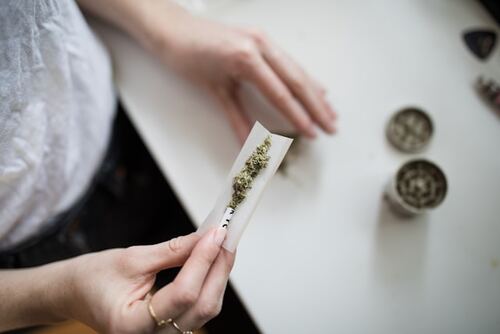Strokes are a leading cause of death and disability worldwide, with the potential to affect anyone, regardless of age or health status. Recognizing the specific symptoms associated with different types of strokes can be crucial for prompt treatment and improved outcomes. In this article, we will delve into the various types of strokes and their specific symptoms, providing a comprehensive guide to help you understand and identify these medical emergencies.
What is a Stroke?
A stroke occurs when the blood supply to part of the brain is interrupted or reduced, preventing brain tissue from getting enough oxygen and nutrients. Brain cells begin to die within minutes, which can lead to permanent brain damage, disability, or death if not treated promptly. There are three main types of strokes: ischemic stroke, hemorrhagic stroke, and transient ischemic attack (TIA), each with its own specific symptoms and causes.
1. Ischemic Stroke
Ischemic strokes are the most common type, accounting for about 87% of all strokes. They occur when a blood clot blocks or narrows an artery leading to the brain, reducing blood flow. This blockage can result from a blood clot (thrombus) forming in an artery supplying the brain or a clot (embolus) traveling from another part of the body.
Specific Symptoms of Ischemic Stroke
- Sudden Numbness or Weakness: This often occurs on one side of the body, affecting the face, arm, or leg. You might notice a drooping face, inability to raise both arms, or weakness in one leg.
- Confusion and Trouble Speaking: Difficulty speaking or understanding speech is common. This can manifest as slurred speech, difficulty finding words, or inability to form coherent sentences.
- Vision Problems: Sudden trouble seeing in one or both eyes, including blurred or double vision.
- Difficulty Walking: Loss of balance or coordination, dizziness, and trouble walking are frequent symptoms.
- Severe Headache: While more common in hemorrhagic strokes, severe headaches can also occur with ischemic strokes, especially if the blockage leads to significant brain tissue damage.
2. Hemorrhagic Stroke
Hemorrhagic strokes occur when a blood vessel in the brain bursts, causing bleeding in or around the brain. This type of stroke can result from conditions such as high blood pressure, aneurysms, arteriovenous malformations (AVMs), or trauma. There are two main types of hemorrhagic strokes: intracerebral hemorrhage (bleeding within the brain) and subarachnoid hemorrhage (bleeding in the space between the brain and the tissues covering it).
Specific Symptoms of Hemorrhagic Stroke
- Sudden Severe Headache: Often described as the “worst headache of my life,” this headache is typically sudden and severe, sometimes accompanied by neck stiffness and sensitivity to light.
- Nausea and Vomiting: These symptoms often occur suddenly and without any clear cause.
- Loss of Consciousness: Fainting or losing consciousness can happen, especially in cases of extensive bleeding.
- Weakness or Numbness: Similar to ischemic strokes, this can affect one side of the body, often accompanied by other neurological deficits.
- Vision Problems: Sudden difficulty seeing in one or both eyes.
- Seizures: Seizures can occur if the bleeding irritates the brain’s surface.
3. Transient Ischemic Attack (TIA)
A transient ischemic attack, also known as a “mini-stroke,” occurs when blood flow to part of the brain is temporarily blocked. Although TIAs do not cause permanent damage, they are serious warning signs that a more severe stroke may occur in the future. Symptoms of a TIA are similar to those of ischemic strokes but typically last only a few minutes to a few hours before resolving completely.
Specific Symptoms of TIA
- Sudden Weakness or Numbness: Usually on one side of the body, affecting the face, arm, or leg.
- Difficulty Speaking or Understanding Speech: Sudden confusion, slurred speech, or trouble understanding others.
- Vision Problems: Temporary blindness in one eye or sudden vision changes in both eyes.
- Difficulty Walking: Sudden dizziness, loss of balance, or coordination.
- Severe Headache: Sudden and severe, similar to that of a full-blown stroke.
Understanding Stroke Symptoms and the F.A.S.T. Test
Recognizing stroke symptoms quickly is crucial for obtaining timely medical treatment. The F.A.S.T. test is a simple and effective way to remember the most common symptoms of stroke:
- F – Face Drooping: Does one side of the face droop or feel numb? Ask the person to smile, and see if the smile is uneven.
- A – Arm Weakness: Is one arm weak or numb? Ask the person to raise both arms and see if one arm drifts downward.
- S – Speech Difficulty: Is speech slurred, or is the person unable to speak or hard to understand? Ask the person to repeat a simple sentence and check if it is repeated correctly.
- T – Time to Call 911: If someone shows any of these symptoms, even if they go away, call 911 immediately and get the person to a hospital.
Risk Factors and Prevention
Understanding the risk factors for stroke can help with prevention. Some risk factors are modifiable, while others are not:
Non-Modifiable Risk Factors
- Age: The risk of stroke increases with age, particularly after the age of 55.
- Gender: Men have a higher risk of stroke, but women tend to have more severe strokes and a higher risk of death from stroke.
- Family History: A family history of stroke increases the risk.
- Race and Ethnicity: African Americans, Hispanics, and Asians have a higher risk of stroke compared to Caucasians.
Modifiable Risk Factors
- High Blood Pressure: Controlling blood pressure is crucial for preventing both ischemic and hemorrhagic strokes.
- Smoking: Quitting smoking reduces the risk of stroke significantly.
- Diabetes: Managing blood sugar levels can help reduce stroke risk.
- High Cholesterol: Lowering cholesterol levels can prevent the buildup of plaques in the arteries.
- Obesity and Physical Inactivity: Maintaining a healthy weight and regular exercise can lower stroke risk.
- Diet: Eating a balanced diet rich in fruits, vegetables, and whole grains, and low in saturated fats and cholesterol, can help prevent strokes.
- Alcohol and Drug Use: Limiting alcohol intake and avoiding illicit drugs can reduce the risk of stroke.
Treatment and Recovery
Immediate treatment for stroke depends on the type of stroke:
- Ischemic Stroke: Treatment often involves clot-busting medications such as tissue plasminogen activator (tPA) administered within the first few hours of symptom onset. Mechanical thrombectomy, a procedure to remove the clot, may also be performed.
- Hemorrhagic Stroke: Treatment focuses on controlling the bleeding and reducing pressure in the brain. This may involve surgery to repair the blood vessel, medications to control blood pressure, and other supportive measures.
Rehabilitation
Recovery from stroke often involves a comprehensive rehabilitation program, which may include:
- Physical Therapy: Helps regain strength, balance, and coordination.
- Occupational Therapy: Focuses on improving daily living skills and adapting to physical limitations.
- Speech Therapy: Assists with speech, communication, and swallowing difficulties.
- Psychological Support: Addresses emotional and mental health issues, such as depression and anxiety, that may arise after a stroke.
Conclusion
Recognizing the specific symptoms associated with different types of strokes is crucial for timely diagnosis and treatment. Whether it’s an ischemic stroke, hemorrhagic stroke, or transient ischemic attack, understanding these symptoms can help save lives and improve recovery outcomes. By being aware of the risk factors and implementing preventive measures, you can reduce the likelihood of experiencing a stroke. Remember, if you suspect someone is having a stroke, act FAST and seek immediate medical attention. The quicker the response, the better the chances of a positive outcome.




